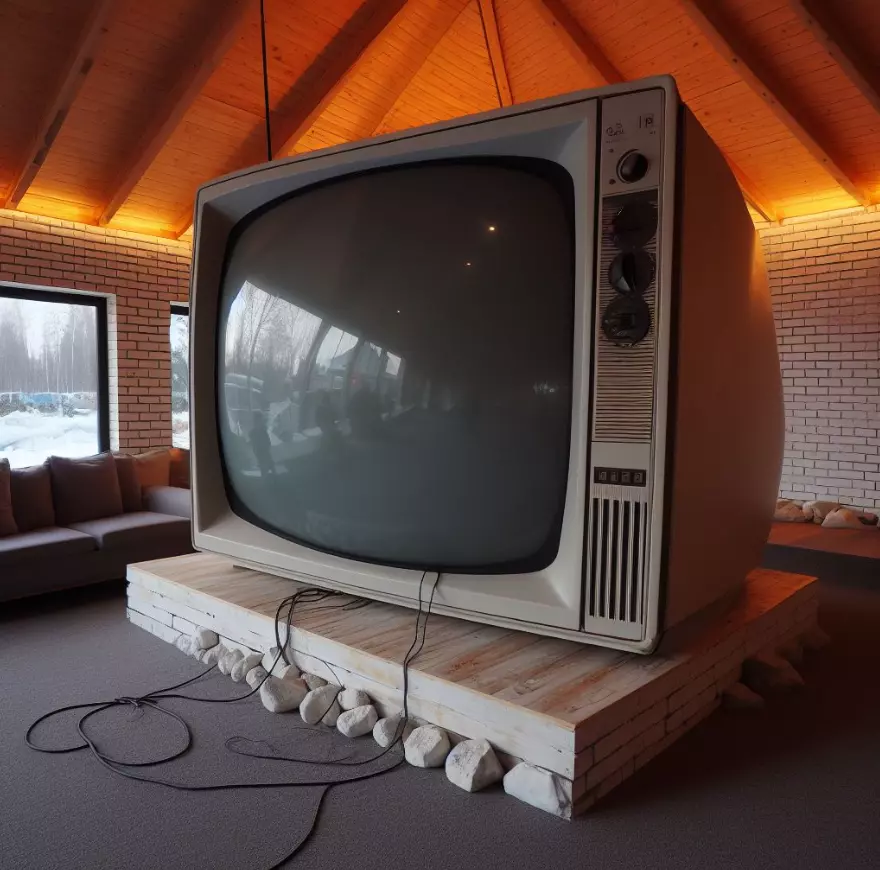We’ve come a long way from those big, old TVs to the slim, modern ones.
One interesting part of this change was when we had those old curved screen TVs with something called CRT (Cathode Ray Tube) technology.
If you’ve ever wondered why those TVs had curved screens and why we don’t see them much anymore, this article will explain the history and science behind this cool design choice.
Let’s move on…
The Purpose of Curved Screens In CRT TVs

CRT TVs had curved screens primarily because of their structural needs.
CRTs were essentially glass bottles filled with a vacuum, which meant that the screen had to withstand the full pressure of the Earth’s atmosphere.
For example, on a regular 27-inch CRT screen, the pressure is quite heavy, around 5,800 pounds (2,600 kg) in total.
To prevent the glass from collapsing under this heavy pressure, CRTs employed a clever engineering solution—Curved Shaped Screen
The curvature of the screen acted much like an arch bridge, converting the force on the screen into a force that spread outwards.
This design made the glass stronger and less likely to break. Steel bands with mounting points were also used to reinforce the screen.

However, curve wasn’t just for strength.
It also helped reduce distortion and improved how things looked on screen.
Here are some benefits of Curved screens:
- Reduced eye strain.
- Better field of view.
- More immersive experience.
- Increased productivity and efficiency.
The Rise and Fall of Curved TVs

Curved CRT TVs were really popular, especially in the mid-2010s with nearly 90% of American households owning one when companies like Samsung had many different models to choose from.
However, as of 2023, curved TVs are pretty rare.
Back in the mid-2010s, Samsung had a bunch of them, but now there are only a few curved TV options left, mostly made by Samsung.
LG has introduced a new 42-inch OLED Flex TV that’s trying to bring back curved screens, but we’re not sure if it will succeed yet.
Curved TVs used to be some of the priciest ones you could buy, but they never became a standard choice for home theaters.
As technology got better, manufacturers figured out how to make flat CRT displays, and people loved them.
That’s why they became more popular in the mid-1990s and eventually took over the CRT market.
In Conclusion
Thinking back on old CRT TVs with their curved screens often brings up feelings of nostalgia.
Today, we have super-detailed screens with lots of features, but the time of CRT TVs will always have a special spot in TV history.
Remember, those curved screens were the result of clever engineering to deal with the pressure of the Earth’s air and to make the TV picture look good.
It’s pretty amazing how smart engineers found ways to make those curved screens work.
F.A.Q.s
Q: Why did CRT TVs have curved screens in the first place?
CRT TVs had curved screens primarily to reduce image distortion and improve focus.
The curve helped maintain a consistent focus across the screen, resulting in a clearer picture.
Q: Were curved CRT TVs more expensive than their flat counterparts?
Yes, curved CRT TVs were often more expensive due to their unique design and engineering requirements.
Their curved screens, steel band reinforcement, and specialized production added to the manufacturing costs.
Q: Did all CRT TVs have curved screens?
No, not all CRT TVs had curved screens.
While curved screens were a common design choice for many CRT TVs, some models, especially older oscilloscopes, featured highly curved screens for precise focus.
Q: Are there any efforts to bring back curved screens in modern TVs?
While curved TVs remain a niche market, some manufacturers, like LG, have experimented with curved OLED screens.
However, flat-panel designs are the dominant choice among consumers.

Abdul Kader, a handy guy and experienced founder of a TV repair shop in Gulshan, Dhaka, Bangladesh. He is mainly an expert in understanding and repairing different types of issues with Smart TVs and providing helpful insights on how to keep them in good working order. Read his Full Story.

